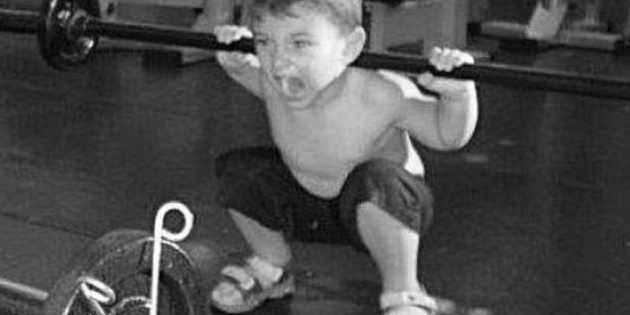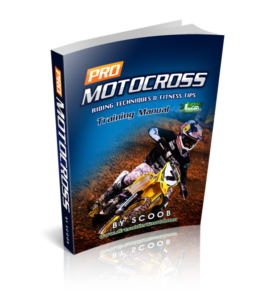Get Your Strength On!
Muscular strength and endurance training enhance agility, speed, strength, and endurance, all of which are essential to the MOTOCROSS racer & rider. This post will help to establish an understanding of the principles of muscle strength and endurance training and their application in the use of weight equipment.
The focus of strength training should be its functional use for motocross. Pure strength alone will not improve moto performance, but conversion of strength to muscle endurance should.
The main objective of your strength training program should be to increase your applied strength – an increase in applied strength will enhance your performance on physical tasks required during races and riding on tracks. As such, this post introduces concepts and practical information for achieving optimal muscle strength and endurance for moto performance and prevention of injuries.
Weight Training Equipment
Technology has allowed the development of exercise equipment that efficiently adapts to the changing needs of a body in motion. Consider the choice of free weights, machines, or a combination of both for development of strength and balance when starting a weight training regimen.
The table below presents a comparison of free weights and machines.
Free Weight and Exercise Machine Comparison
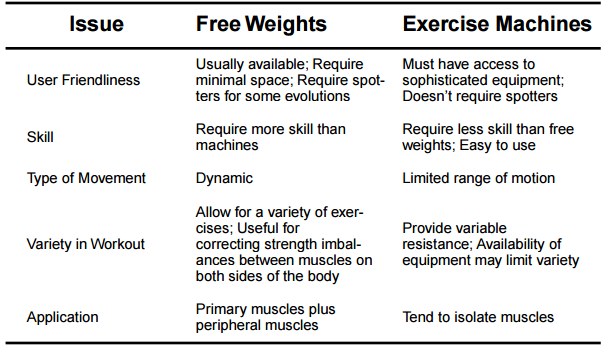
Strength Training Guidelines
Performing operational tasks requires all muscles of the upper and lower body to be developed in a balanced way. Circuit weight training or Split-routine workouts are the most common ways to maintain a musculoskeletal balance.
Circuit weight training consists of a progression from one station to the next such that over the course of the training period, both the upper and lower body are exercised. For split-routine training, different body areas are exercised on alternate days.
For example, on Monday and Thursday, the upper body would be exercised whereas on Tuesday and Friday the lower body would be exercised. By having a well designed strength program, you can expect to maintain a high level of fitness while reducing your risk of injury and fatigue.
Periodization
Periodization of training is a technique that involves altering training variables (such as the number of repetitions per set, the exercises performed, training intensity, and the amount of rest between sets) to achieve well-defined gains in muscular strength, endurance, and overall performance.
For example, if you were working towards a particular race or athletic competition, you would want to peak at that moment and not earlier. Your training schedule would be adapted to achieve that goal.
There are several phases to periodization and weight training in general. The first phase is one of activation, or getting the body ready for a new activity. It would typically last four weeks. Most of you are already weight training and thus have completed the true activation phase, but it is okay to start anew. The second phase is for strength development, and it would last about 4 to 7 weeks, depending on how long you have been weight training.
The next phase is the muscular endurance phase, and lasts 8 to 12 weeks, depending on your schedule. The table below presents a one year plan for training, with three seven week periods of strength development followed by 12 weeks of conversion to muscular endurance. Note that this schedule can be modified, and is presented here to emphasize the concept of periodization.
The goal of the muscular endurance phase is to take strength gains and convert them to applied strength for MOTOCROSS.
An Annual Plan for Activation, Strength Development and Muscular Endurance
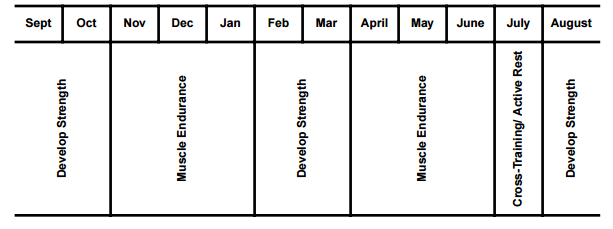
Weight Lifting Techniques
Correct lifting techniques are critical for achieving maximum benefits and preventing injury. Lifting form, speed, and breathing techniques are all important for weight training. The lift should be performed as a controlled movement with proper form. Do not compromise your form as it will not help but rather increase your chance of injury.
The appropriate speed of lifting needs to be applied to all exercise movements. When performing exercises, such as the bench press, squat, biceps curl, lat pull-down, etc., the weight should be moved at a rate of 1-2 seconds in each direction. This will ensure your safety and optimize strength training.
Exhale when moving a weight against gravity.
Proper breathing techniques must be used during weight training. Exhale during positive weight movement (moving the weight against gravity). This helps prevent the valsalva maneuver (an increase in internal pressure caused by holding your breath during lifting exercises) which can result in damage to the cardiovascular system. Never hold your breath while performing any exercise task.
Types of Workouts
A Circuit Routine Training for the first week of the strength development phase and muscular endurance phase is presented. Remember, periodization is the key to improving overall muscle strength and endurance.
Week 1: Circuit Training Strength Development Phase

Week 1: Circuit Training Muscle Endurance Phase
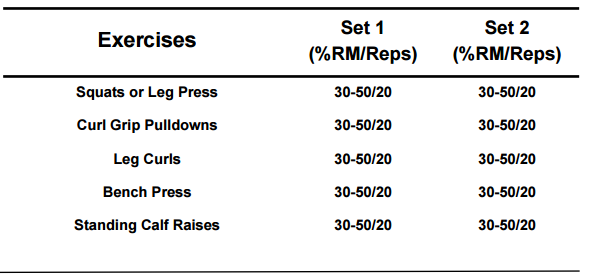
Warming Up
It is imperative to warm-up prior to a strength training workout. An active and dynamic warm-up will elevate the body temperature so that the muscles respond better to the training. An increase in circulation to the joints and tissues allow more elasticity and may decrease the risk of injury. The warm-up should last long enough to break a sweat then stretching should be initiated. Thus, the major component of a warm-up session for weight training is a cardiovascular workout, or a general warm-up designed to increase your circulation and direct blood flow to the muscles for the upcoming workout. This should be low intensity exercise for 10 to 20 minutes.
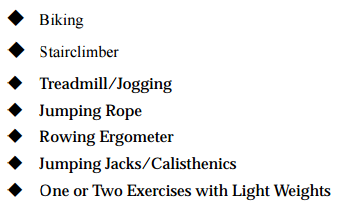
Cooling Down and Stretching
Upon the completion of a training routine, cooling down and stretching should not be overlooked. The cool-down should be gradual to normalize body temperature, prevent pooling of blood in the muscles and return metabolic rates to pre-exercise levels. It also speeds the removal of waste products which tend to increase muscle soreness and prolong recovery. Stretching after weight training maintains joint and muscle flexibility while minimizing muscle spasms and weight training injuries. In brief, the components of a cool down include:
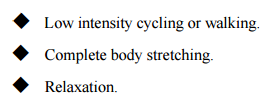
Strength training with weights is an important component to the complete Moto fitness program of the MOTOCROSS rider. Training with weights 2-3 times per week can help optimize preparations for racing & riding tasks for the riders season. It is important to understand that one should focus on the goals of the riders race season when developing a weight training regimen. A proper weight training routine will help prevent injuries and accelerate recovery from an injury to the musculoskeletal system. Following the principles and examples in this post will help you develop a well balanced lifting routine. Optimal conditioning can be obtained without injury to the body if weight training is included in your overall “Fitness” program.
Would you like to have a 6 week fitness program personally written up just for you? Click the button below to sign up now and we will make it happen!
Check out are Pro Motocross Fitness Training Manual
